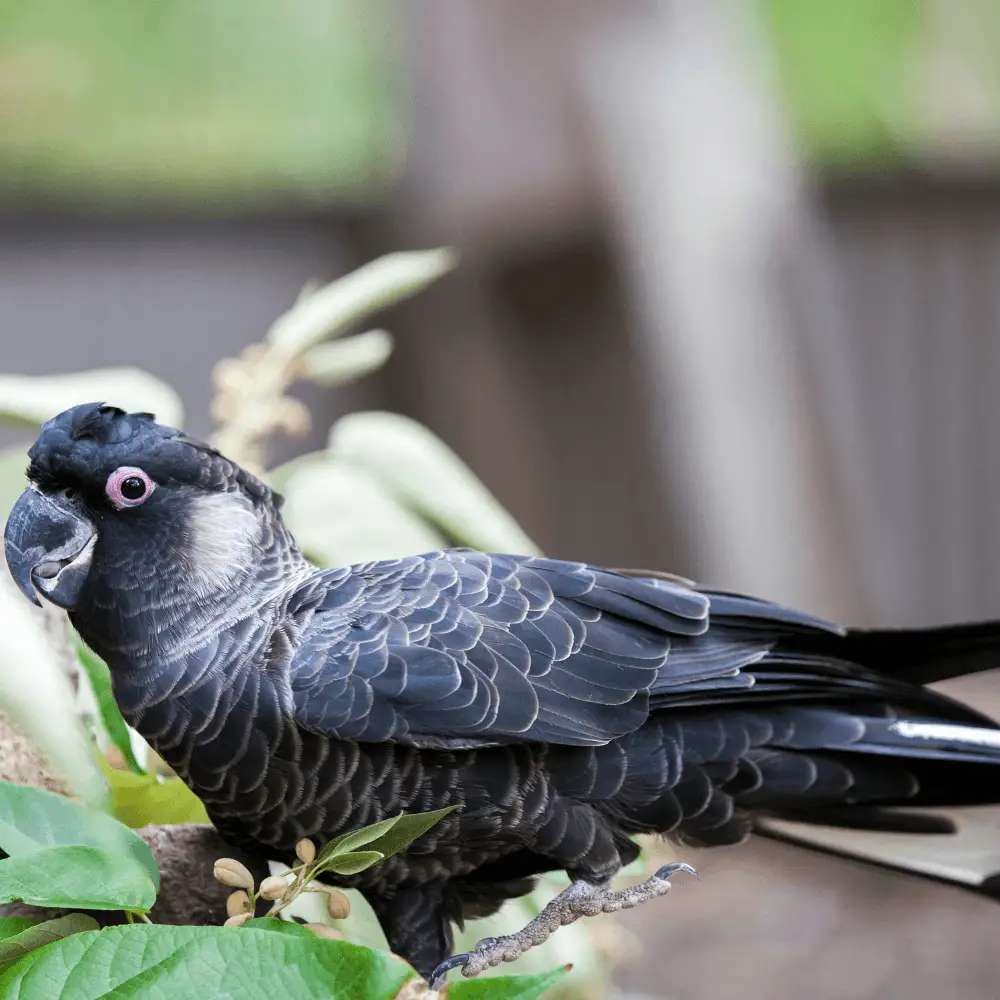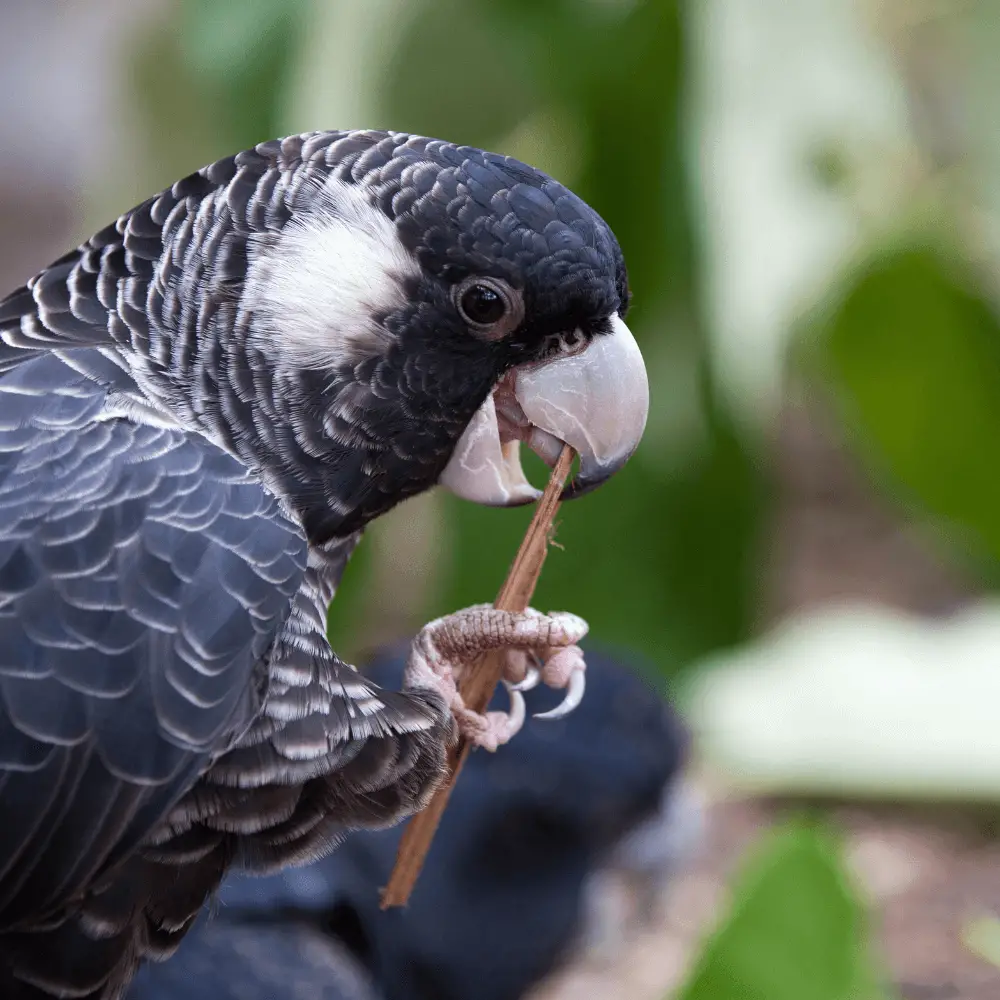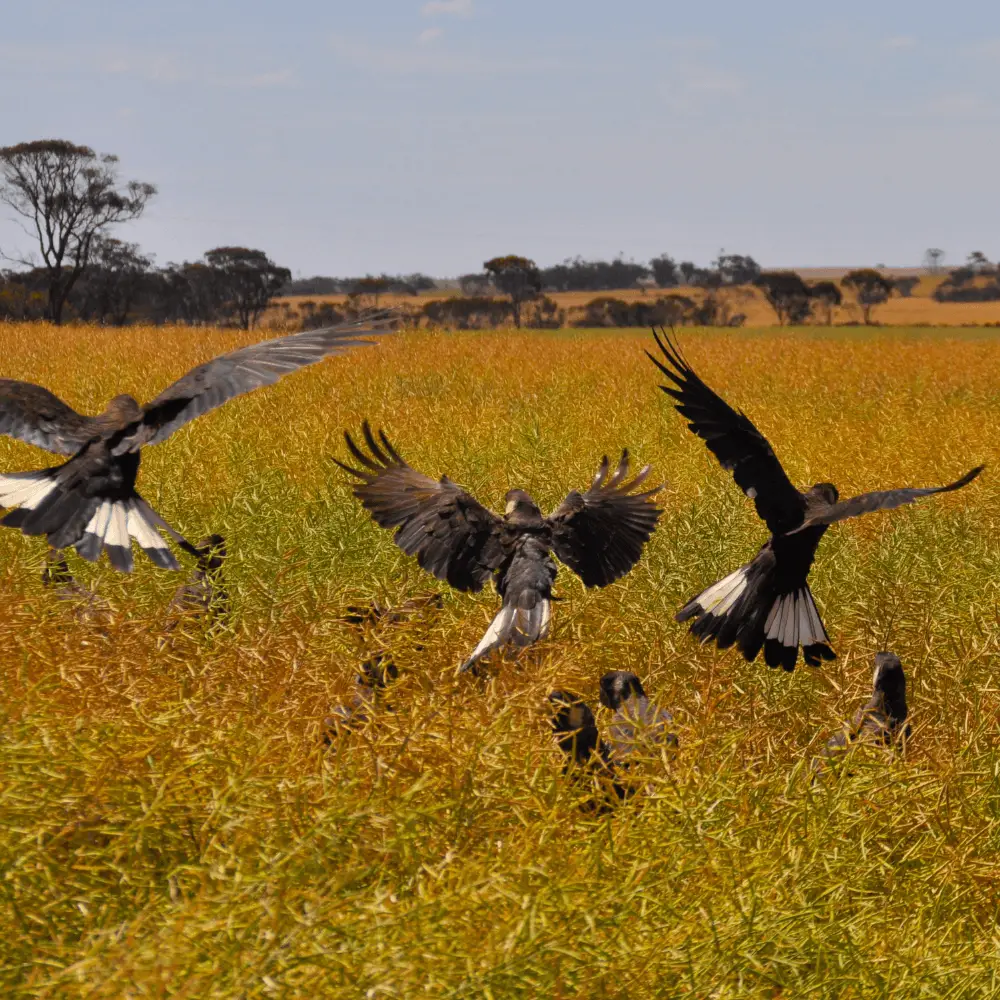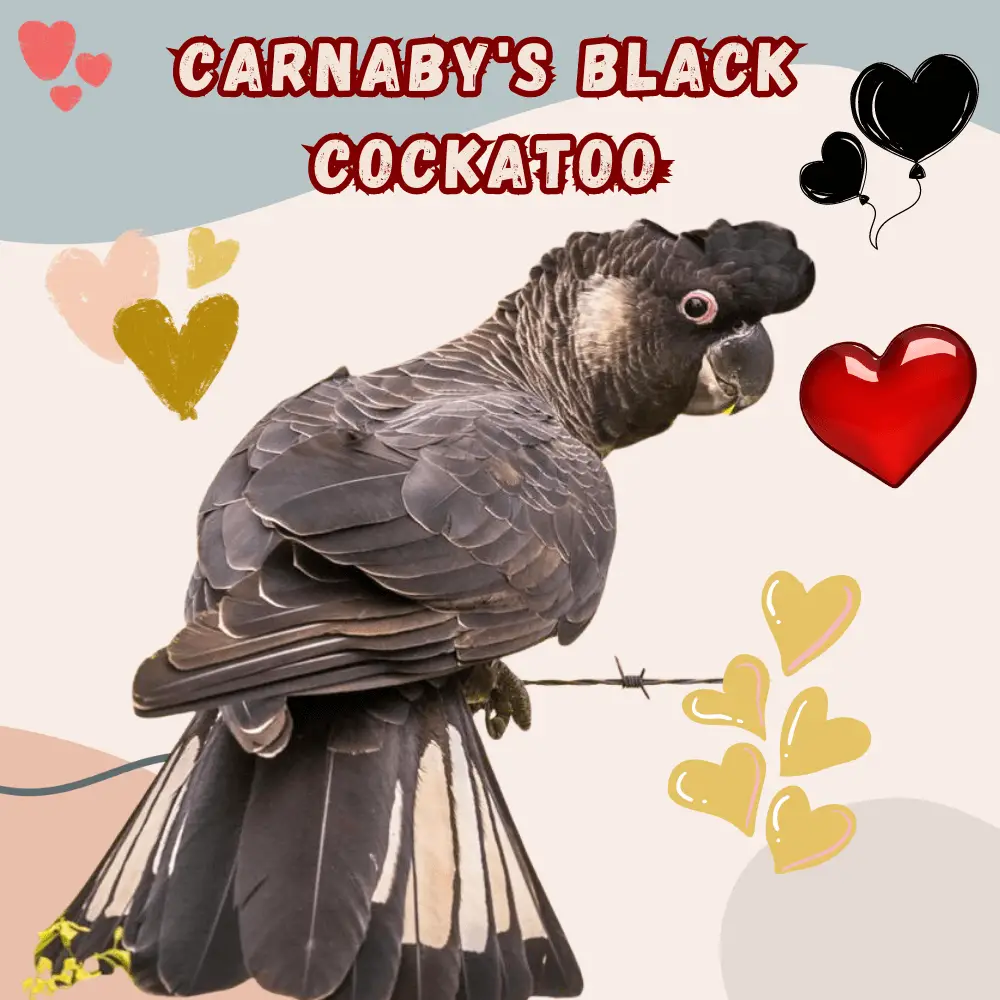Carnaby’s black cockatoo: (Zanda latirostris) It is a large black cockatoo. It has a large black bill, an erect crest, a white patch in the ear area, and white panels on the tail. The female is similar, except for the large and slightly yellowish-white ear patch area.
The immature is Similar to the adult female. closely related to Baudin’s Cockatoo (Zanda baudinii). They were previously treated as a single species.
- Order: Psittaciformes
- Family: Cacatuidae
- Genus: Zanda
- Scientific name: Zanda latirostris
- Citation: Carnaby, 1948
- Protonimo: Zanda latirostris
Carnaby’s black cockatoo habitat

Mainly dwells in native Eucalyptus forests and shrubland or heathers. Temporarily visit exotic pine plantations.
Sometimes you will see them in cities or on the sides of roads. He is also a visible visitor to gardens containing native plants with hard fruit around Perth.
Usually, they are seen in groups of three or in small flocks but occasionally gather in large flocks, consisting of hundreds or, exceptionally, thousands of birds. Sometimes it is associated with Baudin’s black cockatoo (Zanda baudinii) or Banksian Cockatoo (Zanda Banksia) in places where food is abundant.
The species is said to be resident in areas of high rainfall. They retain native vegetation well and are emigrants from drier regions and places where most of the native vegetation has been removed.
Reproduction
They do not breed until they are at least four years old. Adult birds mate for life and stay together throughout the year.
Breeding takes place mainly in the Wheatbelt region, northwest of the Stirling Range about Three Springs, but it has also been recorded on the coastal plain in the southwest, about Bunbury.
The reproductive activity is limited to eucalypt forests. They make their nests in large holes in the upper part of the Eucalyptus.
The egg is white or cream, and they have no marks. Are incubated by the female only, for a period of 28-29 days. The chicks are fed by both parents, although during the first 10 a 14 days after hatching, they are fed exclusively by the female.
Adults return to the same rearing area each year.
What do Carnaby’s black cockatoos eat

It feeds mainly on seeds and occasional nectar, insect larvae, and fruit.
Why is the Carnaby’s black cockatoo endangered

• Current IUCN Red List Category: Endangered.
• Demographic trend: Degressive.
There are those who claim that its population could rely on less than 10,000 birds.
The decline of this species It is mainly due to the loss and fragmentation of habitat. This has been caused by the crossing of native vegetation, mainly for agricultural purposes, Since the mid-twentieth century.
However, the species’ range is thought to continue to contract for some time, leading to a concomitant decrease in population size.
Can you have a black cockatoo as a pet?
The genetic diversity of the captive population is enhanced by a ‘discontinued’ program that rehabilitates injured birds in the wild and then integrates them into captive breeding.
Some eggs and nestlings are captured illegally for sale in poultry markets. Although demand for the species has declined over the past decade, high market prices (about $3,000 per bird and $5,000 per pair) with little success in breeding parrots in captivity, they suggest that the illegal collection of this cockatoo will remain a permanent threat to the survival of this species.
Related article:

